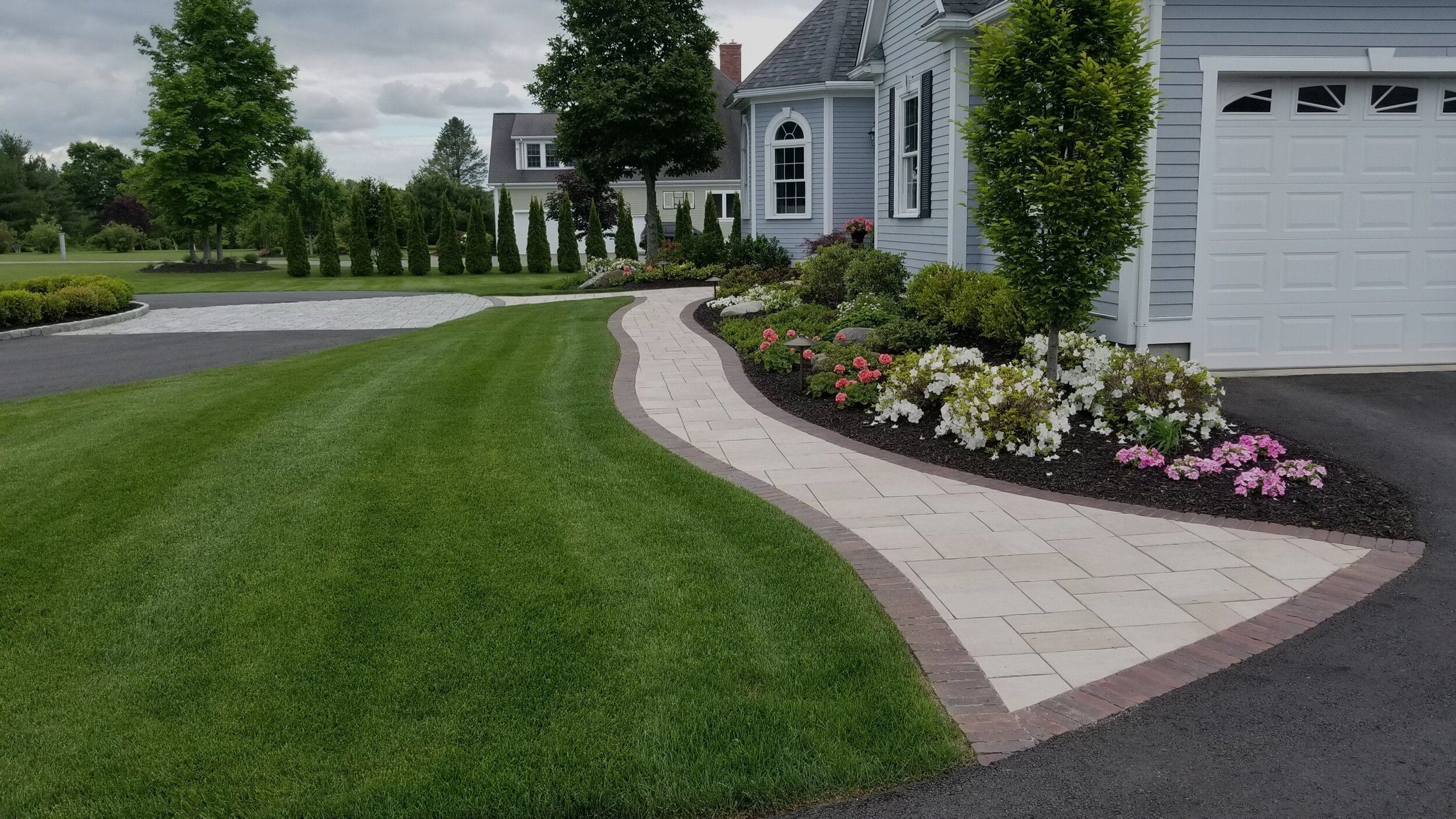Premier Landscaping Company Jacksonville: Exceptional Providers for Beautiful Gardens
Elevate Your Property's Visual With Lasting Landscape Design Styles and Eco-Friendly Practices

Benefits of Sustainable Landscaping
Executing sustainable landscape design methods not only preserves natural resources yet likewise promotes biodiversity and enhances total ecological health and wellness. One considerable advantage is the decrease of water usage through the usage of drought-resistant plants, rain gardens, and efficient irrigation systems.
Furthermore, lasting landscaping can boost dirt health and wellness by minimizing making use of chemical fertilizers and pesticides, thereby developing a healthier environment for plant development and helpful dirt organisms. This, subsequently, improves the total durability of the landscape to hold up against environmental stress factors and climate adjustment impacts - landscaping contractor Jacksonville. Furthermore, lasting landscaping techniques can attract varied wildlife, including pollinators like and butterflies, cultivating a more vivid and balanced ecological community within the residential property
Incorporating Indigenous Plants
To build upon the advantages of lasting landscape design, a tactical focus on including indigenous plants can even more improve eco-friendly resilience and promote biodiversity within the landscape. Native plants are types that normally occur in a specific location and have progressed to prosper in the neighborhood climate, soil problems, and ecosystem. By including indigenous plants in landscaping layouts, homeowner can reduce water usage, minimize the demand for chemical pesticides and plant foods, and sustain the regional wildlife population.
Incorporating native plants additionally aids in protecting the distinct character and identification of an area's vegetation. These plants commonly need less maintenance as soon as developed, making them a lasting and cost-efficient landscape design option in the future. Additionally, native plants can attract indigenous pollinators like butterflies and bees, adding to the overall wellness of the community.
When choosing native plants for landscaping jobs, it is vital to pick varieties that are fit to the specific environmental conditions of the website. Consulting with neighborhood nurseries or agricultural yards can provide valuable support on selecting the appropriate native plants for a particular location. By incorporating native plants right into landscaping layouts, homeowner can develop stunning, lasting outside spaces that benefit both the community and the setting.

Water Conservation Techniques
Reliable irrigation approaches play a vital function in lasting landscaping techniques, guaranteeing optimum water preservation efforts in outside spaces. Trickle irrigation supplies water straight to the roots of plants, decreasing dissipation and runoff.
In enhancement to advanced watering techniques, xeriscaping is another water-saving landscape design method that concentrates on utilizing drought-resistant plants, mulch, and reliable watering to develop a low-water landscape style - landscaping contractor Jacksonville. By selecting native plants that are fit to the neighborhood climate and dirt problems, homeowner can decrease the requirement for excessive watering, eventually preserving water and advertising a lasting exterior atmosphere
Eco-Friendly Hardscaping Concepts
Enhancing outdoor areas with green hardscaping attributes can contribute dramatically their website to sustainable landscape design practices. When thinking about hardscaping components, select materials like redeemed timber, recycled concrete, or all-natural stone to lessen ecological impact. These materials not only add a distinct aesthetic attract your outside area however likewise decrease the requirement for brand-new sources removal.
Executing absorptive leading alternatives such as crushed rock or absorptive concrete can help decrease water overflow and advertise groundwater recharge. These choices permit rain to permeate right into the ground, protecting against erosion and decreasing the problem on a knockout post stormwater systems.
Incorporating indigenous plants right into hardscaping designs can further boost eco-friendliness by supporting local wild animals and decreasing the need for too much watering or chemical treatments. By incorporating vertical yards or green wall surfaces, you can introduce more plant life right into urban setups, improving air top quality and biodiversity.
Integrating energy-efficient illumination, such as solar-powered LEDs, into hardscaping styles can decrease electricity consumption and reduced your residential property's carbon footprint. Focusing on eco-friendly hardscaping concepts not only boosts the elegance of your outside area but also shows a dedication to environmental stewardship.
Upkeep Tips for Lasting Landscapes
:max_bytes(150000):strip_icc()/byladylpergola-f0e18912bd13494682b988bcf37c1265.jpg)
Regularly trim plants to promote healthy and balanced development and avoid overgrowth that can result in pest diseases or problems. Use natural fertilizers to nurture the soil and plants without unsafe chemicals that can leach Go Here into the atmosphere. For hardscaping elements, such as permeable pavers or rock paths, regularly tidy them to stop debris build-up and maintain their performance. By remaining proactive with maintenance jobs, you can maintain the beauty and sustainability of your landscape for many years ahead.
Final Thought
Finally, lasting landscaping practices provide many advantages for building proprietors, from enhancing the aesthetic charm of the environments to advertising ecological conservation. By integrating indigenous plants, applying water conservation techniques, and utilizing environmentally friendly hardscaping ideas, homeowner can develop beautiful landscapes that are also environmentally accountable. With appropriate maintenance, sustainable landscapes can thrive and contribute to a much healthier ecosystem for both humans and wildlife.
Furthermore, lasting landscape design can enhance soil health and wellness by reducing the use of chemical plant foods and chemicals, consequently producing a healthier setting for plant development and helpful soil organisms.To construct upon the advantages of lasting landscaping, a strategic emphasis on integrating native plants can further boost eco-friendly durability and promote biodiversity within the landscape. By consisting of indigenous plants in landscape design styles, home owners can decrease water usage, minimize the demand for chemical pesticides and plant foods, and sustain the local wildlife populace.
These plants usually need less upkeep when established, making them a lasting and economical landscaping remedy in the lengthy run. By incorporating native plants right into landscaping designs, residential property proprietors can produce lovely, sustainable outdoor spaces that profit both the area and the environment.